Big photographs are impressive. From 1950 to 1990, New York’s Grand Central Terminal had a changing display of 60×18 feet (18×5.5 m) backlit transparencies. This display was a Kodak advert – the iconic Colorama series, described as “the world’s largest photographs”.
In 2006, six photographers converted an aircraft hangar into a pinhole camera, creating an even bigger photograph – 111 feet (34 m) wide and 32 feet (9.8 m) high.
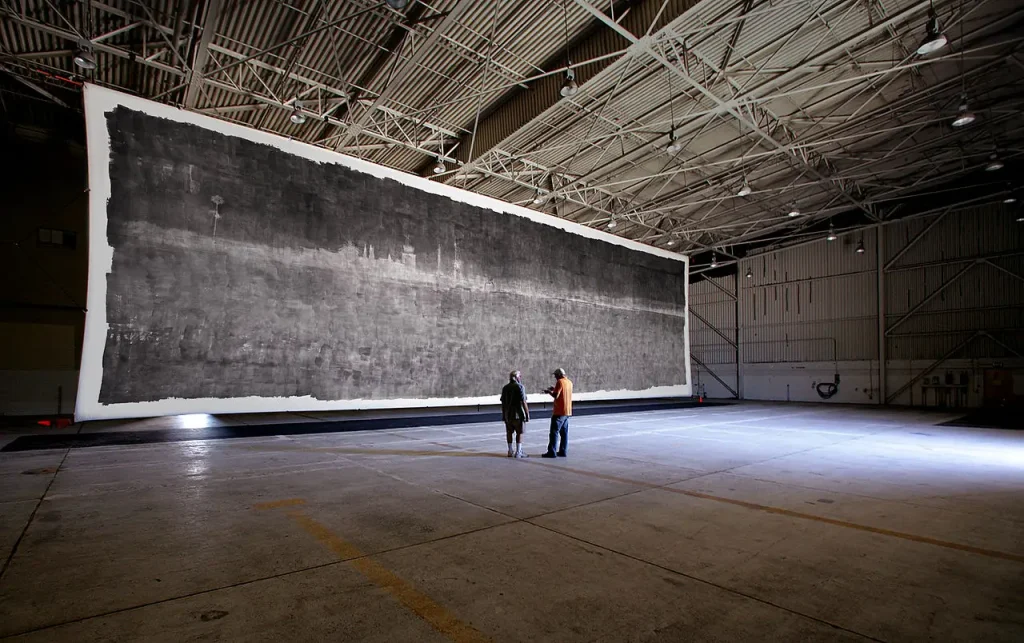
I do like big prints… sometimes. This post, however, is about small prints.
Large prints can attract attention – even awe. You can immerse yourself in the detail, or marvel at the craftsmanship and technology that went into the making of the print. But small prints have their own charm. They have an understated, intimate, precious quality. They draw you in.
What is small?
Size, of course, is relative. A print which looks big in a book may look small on a gallery wall. My dad shot 35mm colour film in the ’90s, and labs would give us “postcard-size” prints. They were quite small – 6×4″ (15×10 cm) – made to be stuck in family albums or passed around from hand to hand. For purposes of this post, I’m arbitrarily defining “small print” as even smaller than that – any print smaller than 6″ (15 cm) on the long edge.
Three kinds of small prints
Contact prints
I think I always liked small prints, but we don’t always have a conscious awareness of our likes and dislikes; sometimes it takes a chance incident to bring them to the fore. I was organising my grandmother’s albums when I came across these photos of my aunt and uncle.
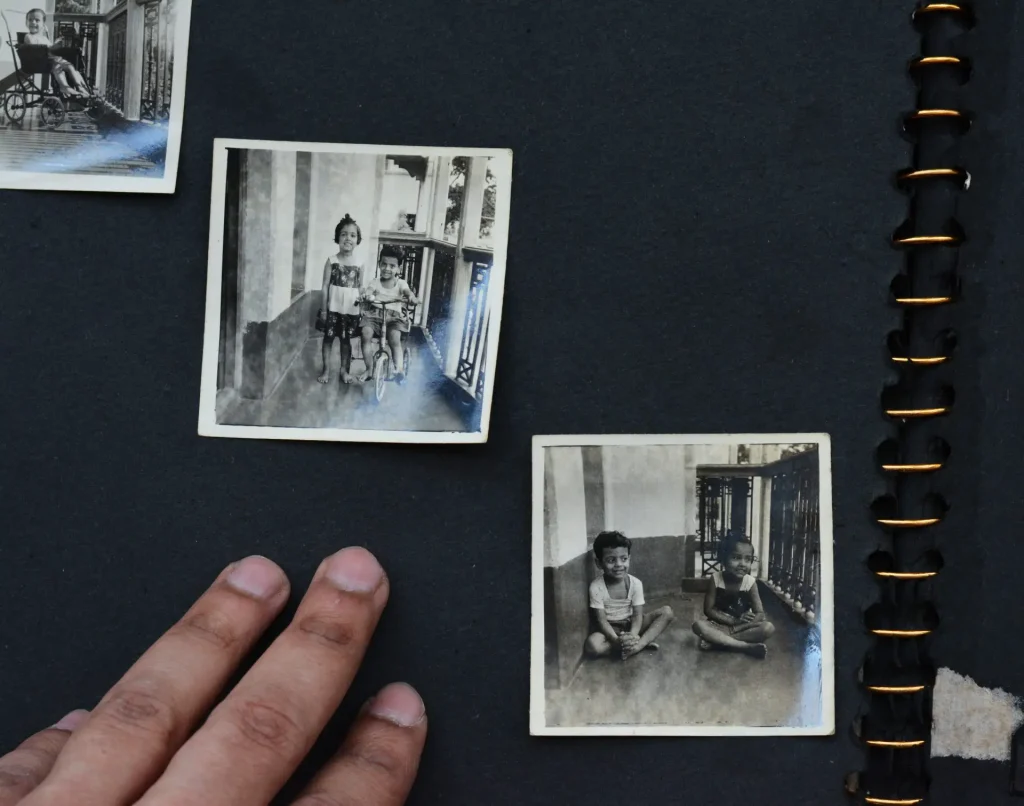
My grandfather made these pictures sometime in the late ’60s or early ’70s. He did a lot of photography and darkroom printing for work (he was an aerial reconnaissance photographer with the Indian Air Force), but he never owned an enlarger or even a camera. So these are contact prints from 6×6 negatives made with a borrowed camera. They’re family photos, so I’m obviously biased, but they opened my eyes to just how beautiful small prints can be.
The same day that I took these photos-of-photos, I went to an exhibition of photographs by Debalina Mazumder and Manobina Roy, twin sisters born in India in 1919. Most of the exhibited photos were obviously enlargements, but there was also a display of the sisters’ Rolleicord and Rolleiflex cameras, and some lovely 6×6 contact prints.
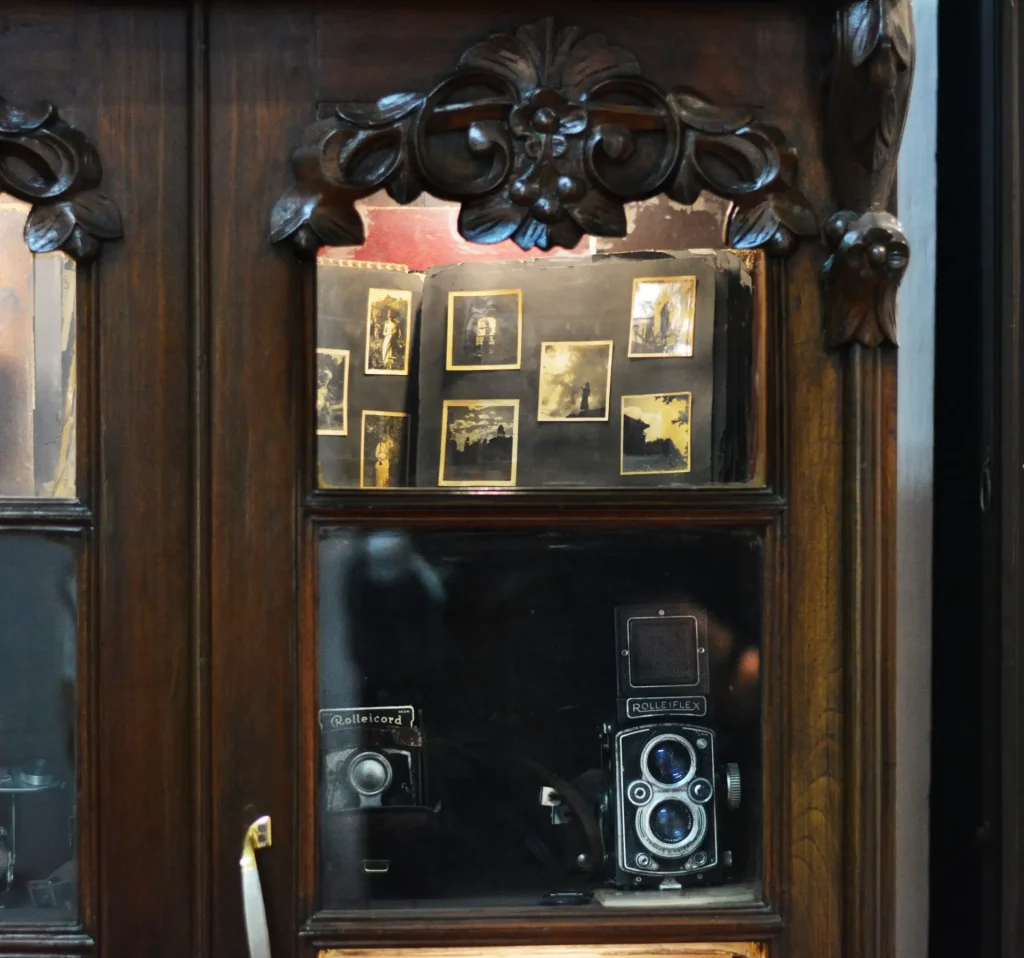
Instant photos
Instant photos are similar to contact prints, in that the print is the same size as the film format. And who doesn’t love instant photos? One of my favourite photos of myself is an Instax taken by my partner, of me playing with her niece. I don’t think this would work as well at a larger size.
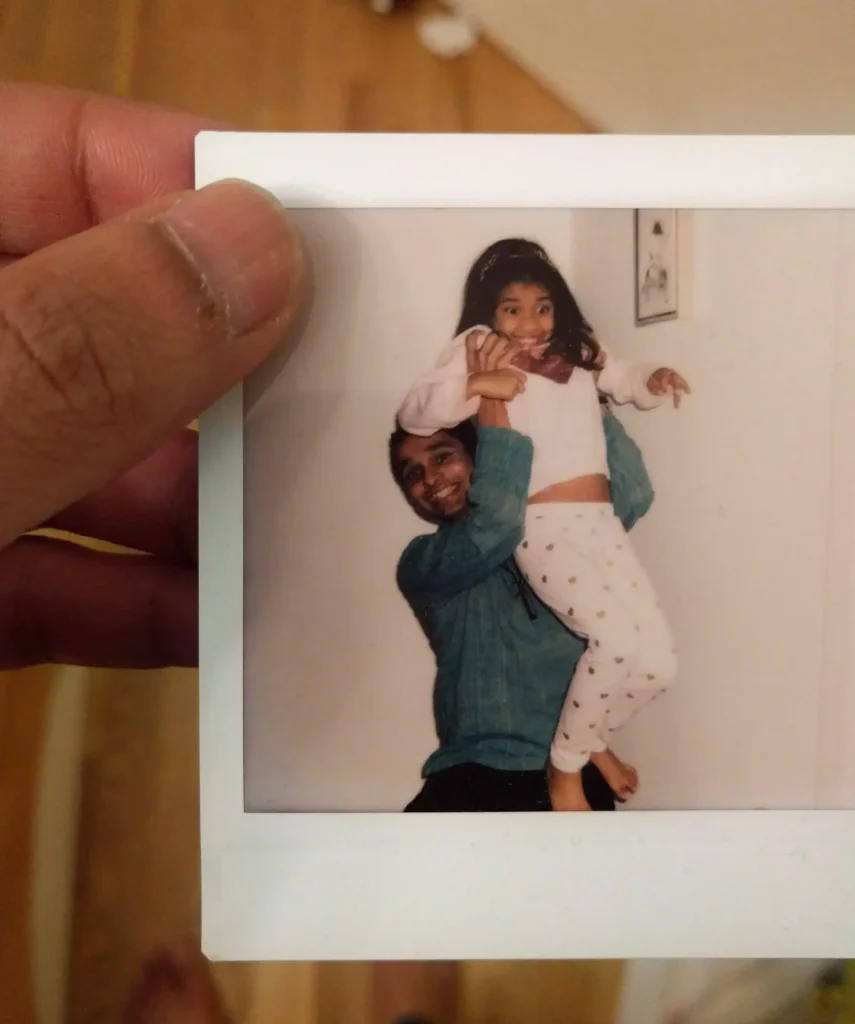
Small enlargements
Enlargements can qualify as small prints too, as long as they are – by my arbitrary definition – less than 6″ (15 cm) on the long edge. Nearly all digital prints are technically enlargements, i.e. larger than the sensor. Phone sensors are especially tiny. The photo below was taken with my Google Pixel 2 (12.2 MP, 5.68×4.54 mm sensor) and printed by a lab. A large print would show up the limitations of a phone sensor, but at small sizes, you don’t really notice.
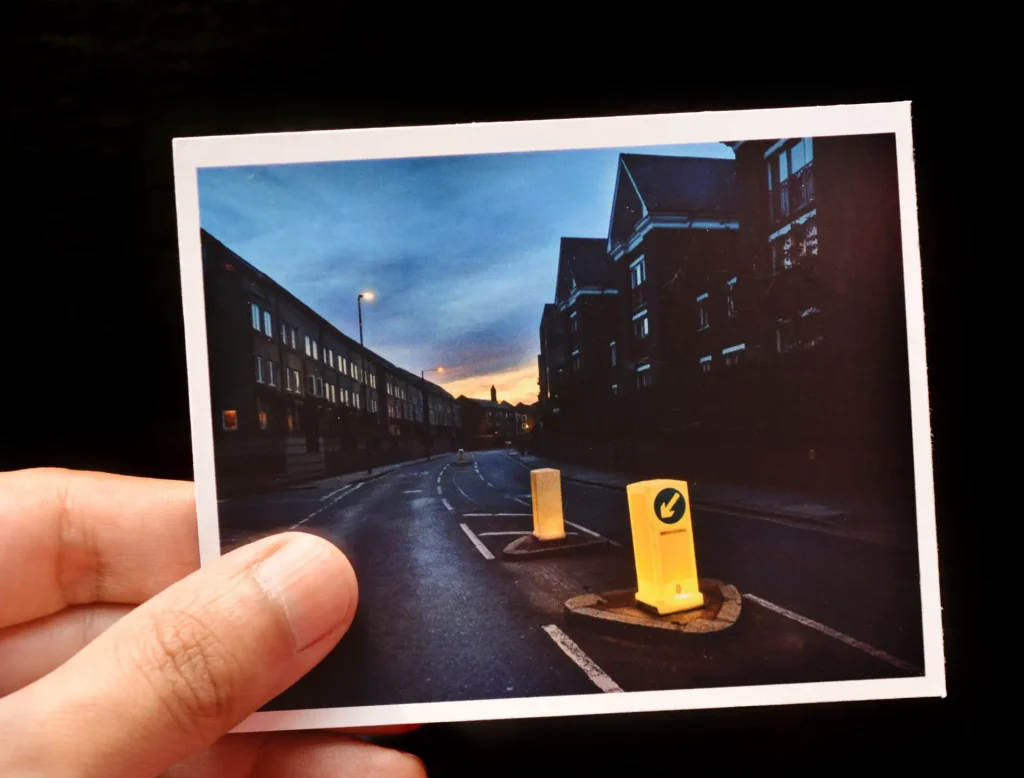
The same goes for small-sensor digital cameras. For several years, my only camera was a Canon PowerShot (12 MP, 6.17×4.55 mm sensor). Again, small prints look quite nice.
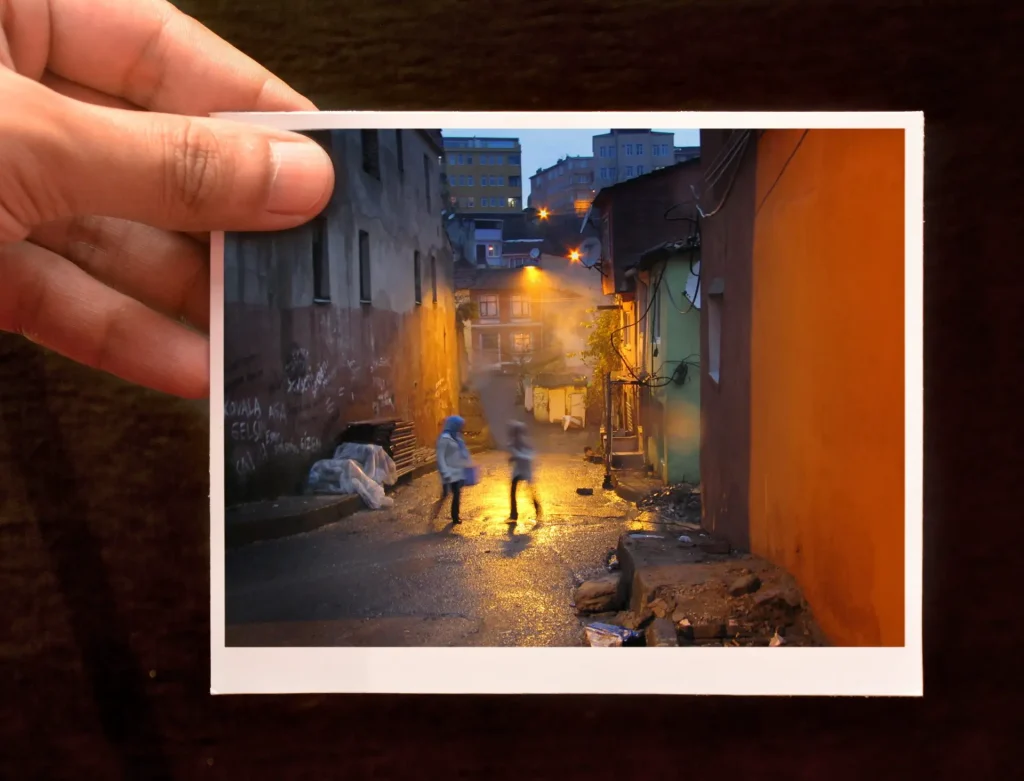
In 2013, I replaced the PowerShot with a DSLR – a Nikon D5200 which I still use. It has an APS-C sensor (24 MP, 25.1×16.7 mm) which is far more capable than the PowerShot or my phone. But just because I can print large doesn’t mean I have to. Sometimes, a small print befits the subject. This photo was taken with my DSLR and a macro lens:
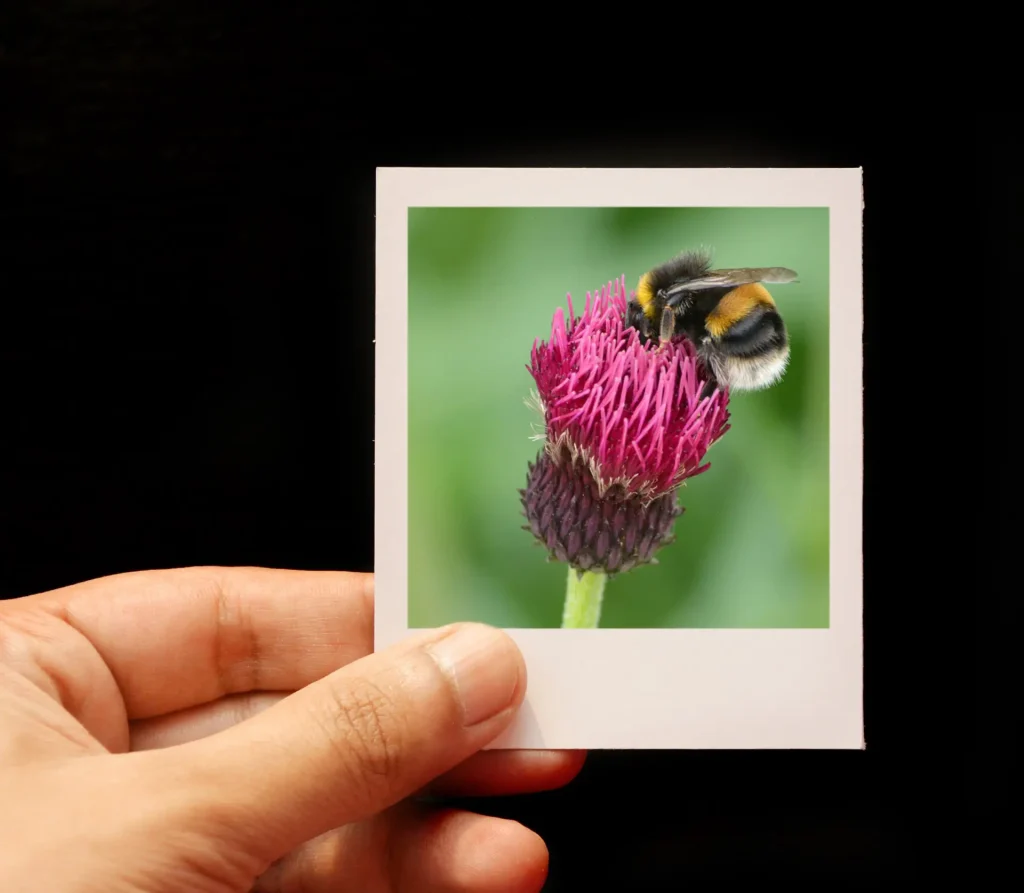
Which brings us to the question…
How big should a print be?
Image content
Some photos look better as large prints, while some look better at smaller sizes. I can’t always look at a photo and predict if it will work better as a small or large print (with time and experience, I hope to get better at it). One thing I’ve noticed is that small prints don’t seem to work so well if the photo has no prominent subject, or if it relies for its impact on fine details. Sometimes, as with this photo of a fern leaf, I just print at different sizes and see what works.
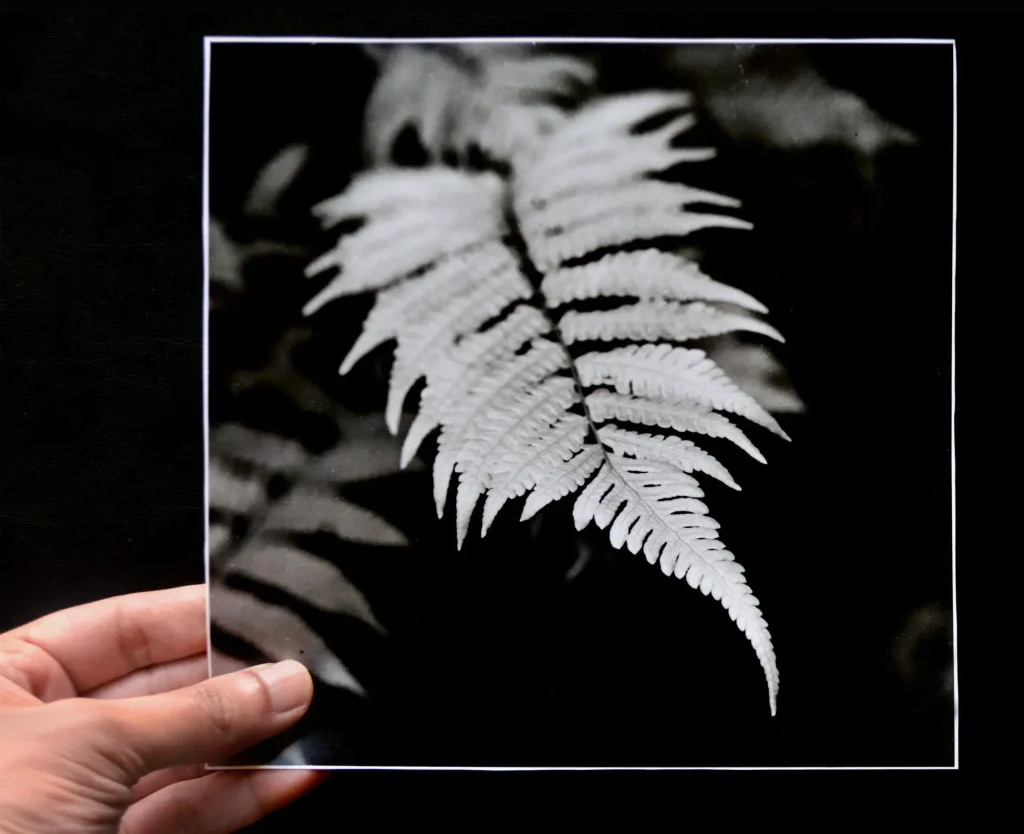
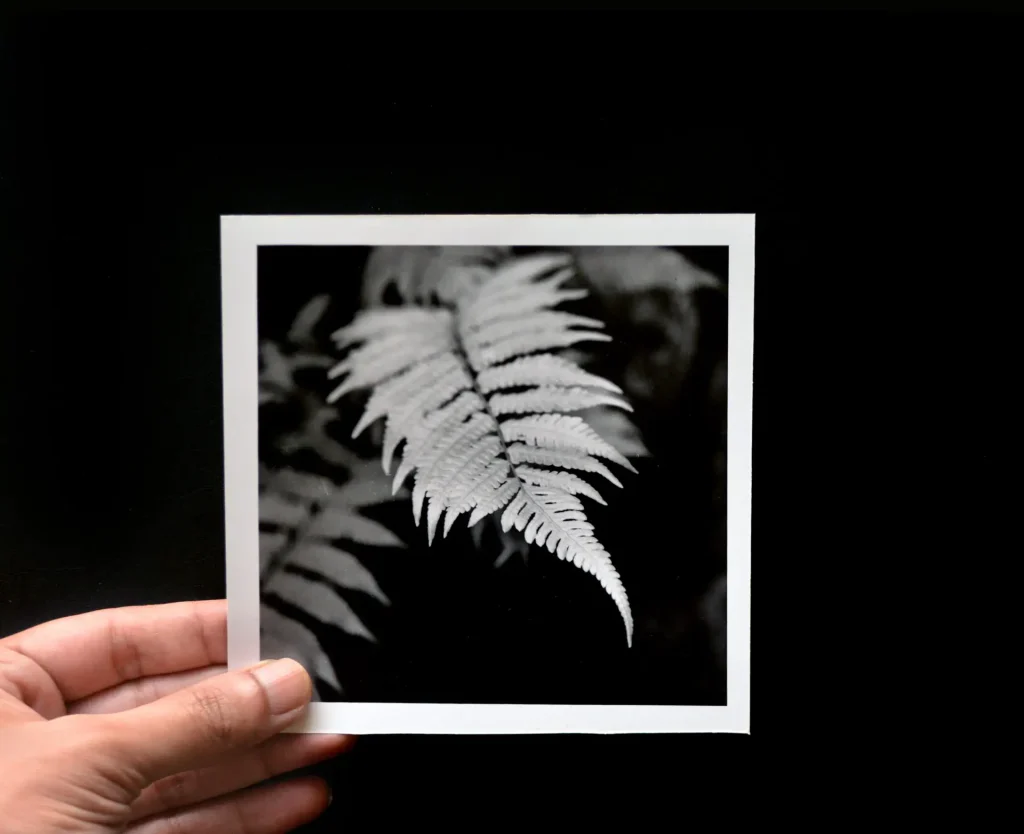
In this case, I prefer the smaller print. What do you think?
Technical considerations
For some photos, the deciding factor is not so much the content, but technical aspects like resolution and grain. Print labs often have guidance on pixel-count and maximum recommended print-size, but of course, these are just rules of thumb. An image with lots of pixels may still suffer at large print-sizes due to grain, lens aberrations, missed focus or sundry other factors. Unless you want to emphasise the imperfections, in which case, all bets are off.
Viewing distance
The traditional advice is to let the viewing distance dictate the size – print large if a photo will be viewed from a distance; small if it will be viewed up close. This is one reason why photos on billboards are bigger than those in family albums. But the causal link works both ways: the print-size also influences the viewing distance. Print big if you want viewers to stand back and admire. Hang a small print on a wall, and people will subconsciously go closer to inspect it. To quote a comment I once read on a photo forum, “A big print will grab your attention in a room and turn your head. A small print that that catches your eye will move your feet.”
Presentation
Presentation matters for all kinds of prints, not just small ones. But small prints generally seem to benefit from clean presentation and negative space. Remember the fern-leaf prints I showed earlier? The smaller of the two is displayed in this walnut frame which my friend Tommy made for me.
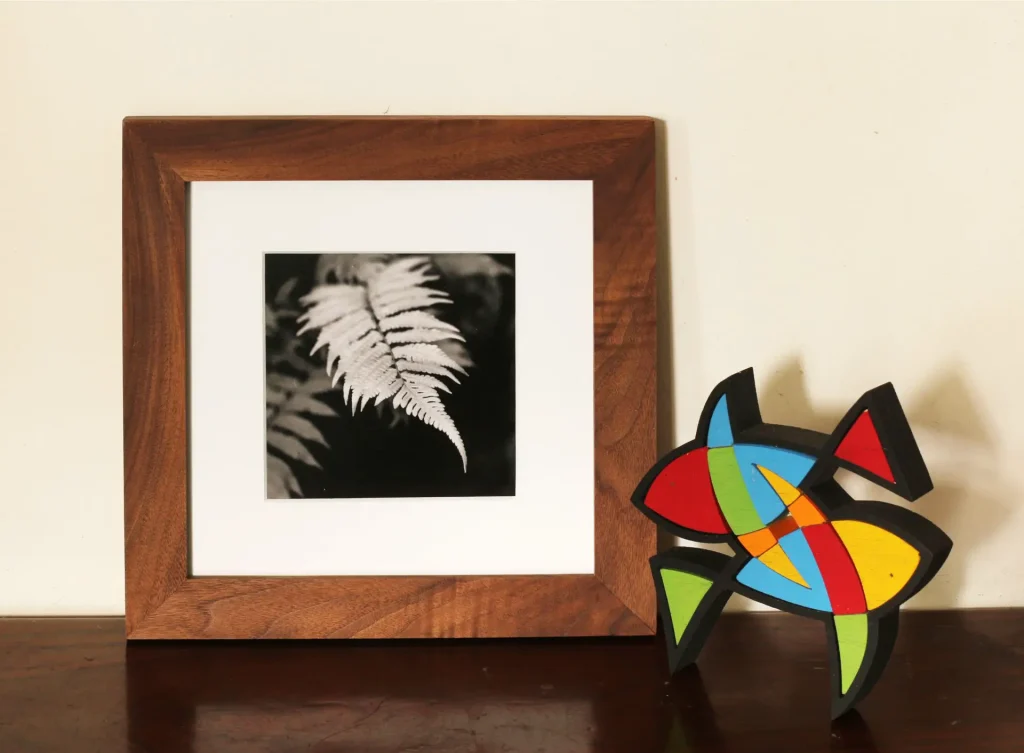
Another way to present prints is in a book. Des oiseaux (On Birds), a photobook by Pentti Sammallahti, has several photos which fit my definition of small prints (it also has a minimalist layout with lots of negative space).
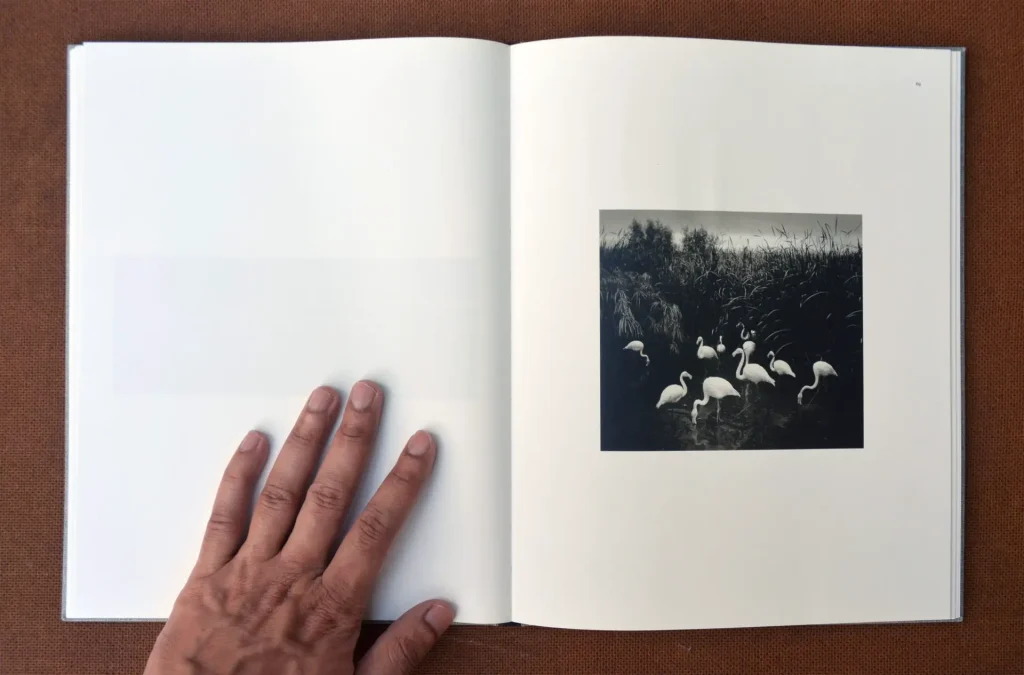
I don’t think I have a photobook which is smaller than 6″ on the long edge, but I do have a zine: Vue by Angèle Fourteau. It’s a simple concept and an unassuming size, but I really like it.
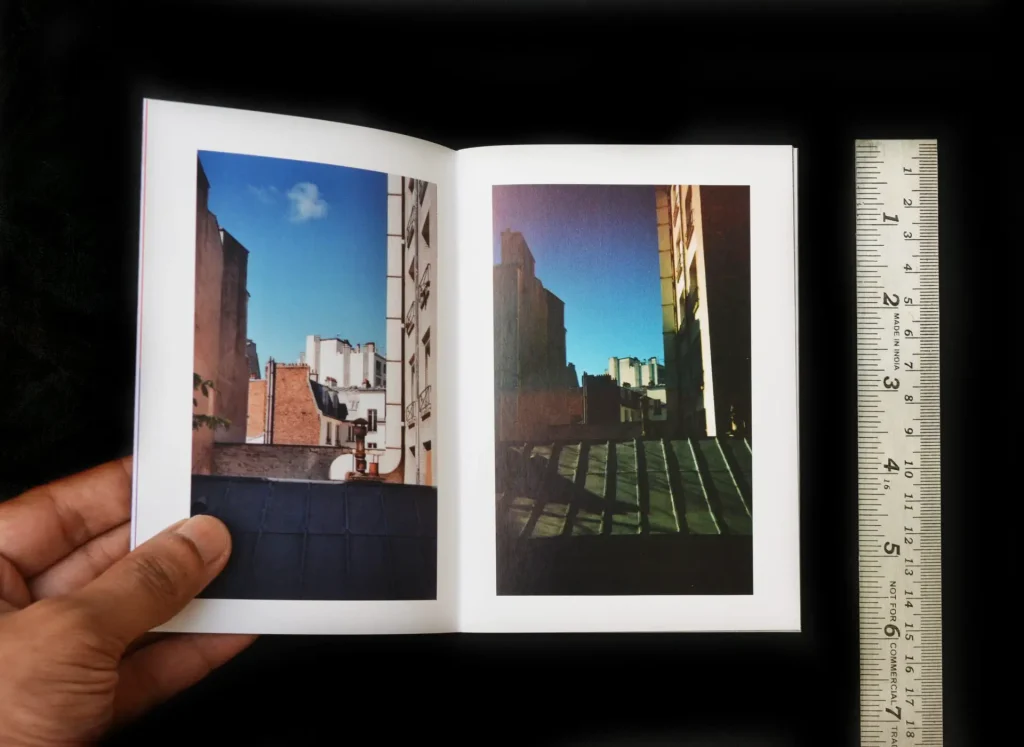
Final thoughts
Small prints also have some practical advantages. They are cheaper (less paper, less ink), take up less space whether on display or in storage, and mistakes such as missed focus and dust spots on the negative are not as noticeable. But I like small prints for purely aesthetic reasons too, and I’m sure I’m not the only one who feels this way. Do you make, own or like small prints – and if so, what do you like about them?
Thanks for reading. For more of my work – including prints both small and not-so-small – please feel free to check out my Instagram.
Share this post:
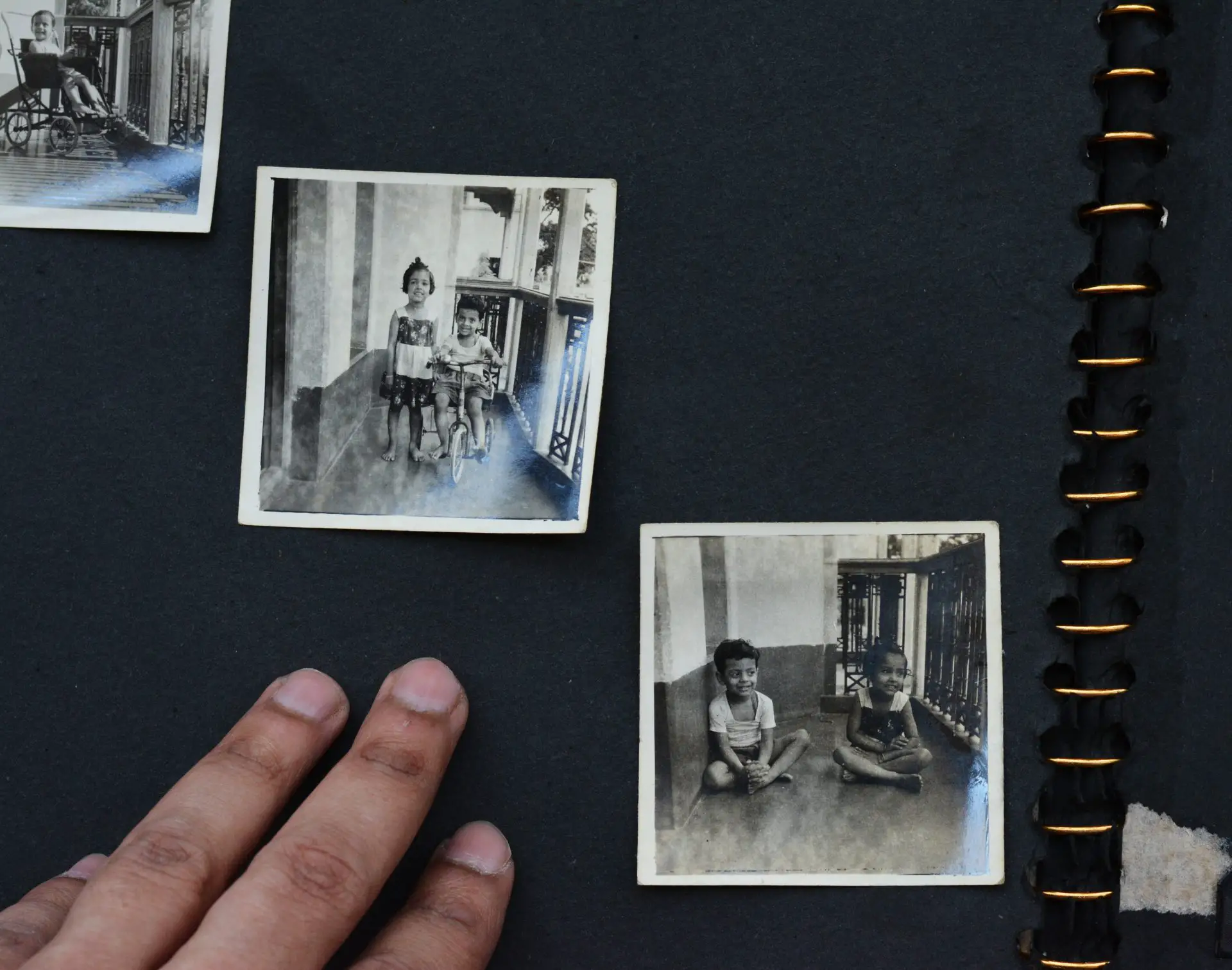








Comments
Martin Siegel on The Joy of Small Prints – by Sroyon
Comment posted: 12/04/2022
Comment posted: 12/04/2022
Felix Troiszéro on The Joy of Small Prints – by Sroyon
Comment posted: 12/04/2022
Comment posted: 12/04/2022
Kurt Ingham on The Joy of Small Prints – by Sroyon
Comment posted: 12/04/2022
I hoarded and refrigerated a lot of Fuji packfilm- and use some of it in my Hassy and Kowa.- I inevitably get some angry feed back for 'wasting' film ( not using the full frame.) Little prints demand your attention-as do big ones-just in different ways
Comment posted: 12/04/2022
Jasper T Kauth on The Joy of Small Prints – by Sroyon
Comment posted: 12/04/2022
I like to give away small prints as little tokens and gifts. They're really great for that, especially because they can also work without frames (same goes for instant photos). I would not necessarily put a 10x8 print on my desk without a frame - but a postcard or smaller-sized one? Absolutely! It's nice to think that so much effort and personal dedication went into such a small thing.
Comment posted: 12/04/2022
Philip Ahlquist on The Joy of Small Prints – by Sroyon
Comment posted: 12/04/2022
I’ve been struggling with how to make purely analogue images - not the theory, but just how I can make it happen. I don’t have a darkroom and I’m not really in a position to embark on setting one up. I’ve been working with cyanotypes and have been seriously considering tackling a cyanotype enlarger to make prints that have never been near a computer. Hardly an easy task! But now I have the answer - cyanotype contact prints from my medium formats are now the plan. Thanks for sharing!
Comment posted: 12/04/2022
jason gold on The Joy of Small Prints – by Sroyon
Comment posted: 12/04/2022
We hold small cameras or phones with small screens..
wh had space for murals?
Comment posted: 12/04/2022
Gary on The Joy of Small Prints – by Sroyon
Comment posted: 13/04/2022
Comment posted: 13/04/2022
Fiki on The Joy of Small Prints – by Sroyon
Comment posted: 14/04/2022
Samll prints are more intimate and do not demand perfect photograph, just a piec6 of memory...
For that purpose I print on 13x9cm darkroom paper and for digital I use Canon Selphy. I would strongly suggest buying Selphy for easy and fast printing. Cheers!
Comment posted: 14/04/2022
DaveG on The Joy of Small Prints – by Sroyon
Comment posted: 14/04/2022
Comment posted: 14/04/2022
Merle on The Joy of Small Prints – by Sroyon
Comment posted: 15/04/2022
Comment posted: 15/04/2022
Lili Elrod on The Joy of Small Prints – by Sroyon
Comment posted: 15/04/2022
Contact prints especially...
Comment posted: 15/04/2022
Jerome on The Joy of Small Prints – by Sroyon
Comment posted: 15/04/2022
Comment posted: 15/04/2022
Michael J on The Joy of Small Prints – by Sroyon
Comment posted: 16/04/2022
Comment posted: 16/04/2022
Jay Dann Walker in Melbourne on The Joy of Small Prints – by Sroyon
Comment posted: 20/04/2022
In the 1950s, '60s and even well into the '70s, standard 3x3" square or 4x6" rectangular prints were the go in Canada. All my childhood snaps were printed square on 3x3 Kodak Velox paper. Earlier photos (I was born in 1947) were printed on contact Velox paper, mostly by our local chemist who had a small darkroom at the back of his pharmacy (drug store in North America). Most of these are now light brown but have lasted well. Unlike color prints from the late '60s and '70s which are mostly faded, but by then I was photographing mostly my (now divorced) partner and our cats, all of which are no longer part of my life. A few prints have survived - also a 1953 studio image of me as a six-year old, printed on Ektacolor paper. I've kept it stored in the dark in an acid-free envelope for many years, which may explain its long survival. Other color prints and early color slides (mostly Anscochrome which seems to have been all that was available by way of slide film in New Brunswick, Canada, 70 years ago) are now long gone. So it goes...
In my own home darkroom (which I've had in one form or another since 1961) I still print small. Most of my 35mm b&w images are printed as 4x5" as I tend to cut down 8x10" sheets of enlarging paper into four pieces. My Rolleiflex shots are printed as 4.5x4.5" squares on 5x8" paper (half 8x10" cut down). For many years I printed on fibre base paper and toned, but now in my old age time is more precious and I use RC paper for speed and convenience.
These small images are also easier to store, but I have several tens of thousands of them, now kept mostly in storage cartons in our (temperature controlled) 'granny flat' behind the house, which we use as a spare bedroom and a cat play room.
Time passes, things change. Our images endure. Small is good.
From Dann in Melbourne
Comment posted: 20/04/2022